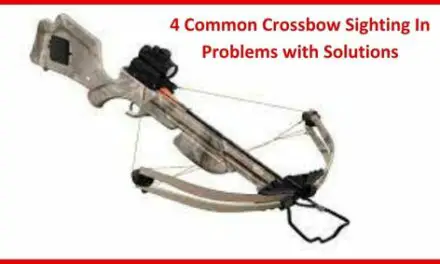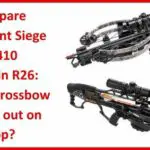When it comes to the world of archery, one essential component that plays a significant role in an archer’s success is the broadhead.
What Are The Three Basic Types Of Broadheads
The three basic types of broadheads are fixed-blade, mechanical, and hybrid designs.
- Fixed-blade broadheads have stationary blades permanently attached to the arrow shaft, offering simplicity and durability.
- Mechanical broadheads deploy their blades upon impact, maximizing cutting diameter for increased effectiveness.
- Hybrid broadheads combine features from both fixed-blade and mechanical designs, providing versatility for different hunting situations.
Understanding these types helps archers choose the right broadhead for their specific needs.
Comparison Table
| Feature | Fixed Broadheads | Mechanical Broadheads | Hybrid Broadheads |
| Design | Fixed blades | Mechanical blades | Combination of both |
| Blade Deployment | Blades remain fixed in flight, no deployment | Blades expand upon impact | Combination of fixed and mechanical blades |
| Penetration | Typically better penetration due to fixed blades | Good penetration when mechanical blades open | Good penetration, especially when mechanical blades deploy |
| Accuracy | Generally more accurate as they maintain a fixed position | Accuracy may be affected if mechanical blades do not open properly | Accurate, but performance may vary based on blade deployment |
| Cutting Diameter | Usually smaller cutting diameter | Larger cutting diameter when mechanical blades deploy | Variable cutting diameter, combining benefits of both |
| Kinetic Energy Transfer | Effective transfer of kinetic energy to the target | Kinetic energy may be partially used to open mechanical blades | Kinetic energy used for penetration and cutting |
| Blood Trails | May create smaller blood trails | Often creates larger blood trails due to wider wound channels | Variable blood trails, depending on blade deployment |
| Blade Replacement | Blades need to be sharpened or replaced after use | Mechanical blades can be replaced after use | Blades may need replacement or maintenance |
| Crosswind Sensitivity | Generally less affected by crosswinds | Slightly more susceptible to crosswind deflection | Moderate sensitivity to crosswinds |
| Required Kinetic Energy | Typically lower energy required for penetration | Higher kinetic energy needed for mechanical blades to deploy | Moderate kinetic energy needed for both functions |
| Versatility | Effective for a wide range of game, especially larger animals | Suitable for various game, but may be better for medium-sized game | Suitable for various game, providing flexibility |
| Price Range | Often more affordable | Usually more expensive due to mechanical components | Generally falls between fixed and mechanical broadheads |
Fixed-Blade Broadheads
- Stationary Blades: Fixed-blade broadheads have blades that are permanently attached to the arrow shaft, providing simplicity and reliability.
- Durability: Since the blades are fixed, there are no moving parts that can potentially fail or malfunction.
- Cutting Diameter: Fixed-blade broadheads typically have a smaller cutting diameter compared to mechanical broadheads.
When to Use:
- Consistency: Fixed blade broadheads are known for their reliability and simplicity. They are a good choice when you want a broadhead that is less prone to mechanical failure.
- Penetration: If you need deep penetration, especially for larger game with thick bones, fixed blade broadheads can be ideal. They tend to provide excellent penetration.
- Heavy Game: When hunting big game like elk, moose, or bear, fixed blade broadheads are often preferred due to their ability to maintain structural integrity upon impact.

Pros of Fixed-Blade Broadheads:
- Penetration: The fixed blades offer excellent penetration due to their sturdy construction and ability to maintain their position during impact.
- Simplicity: Fixed-blade broadheads are straightforward to use and require no additional steps for deployment.
- Reliability: With no mechanical components, fixed-blade broadheads are less prone to failure or malfunction.
Cons of Fixed-Blade Broadheads:
- Flight Characteristics: Fixed-blade broadheads can sometimes affect the arrow’s flight due to their larger profile, potentially leading to accuracy issues.
- Smaller Cutting Diameter: The smaller cutting diameter of fixed-blade broadheads may result in less tissue damage and blood loss compared to mechanical broadheads.
- Sharpening: Fixed-blade broadheads require regular sharpening to maintain optimal performance.
Best Fixed Blade Broadheads:
G5 Montec Broadhead: Known for its durability and simplicity, the G5 Montec is a popular choice among bowhunters. Its one-piece steel construction and cut-on-contact design provide reliable performance.
Muzzy Trocar Broadhead: Muzzy’s Trocar series offers excellent penetration with its three razor-sharp fixed blades. They are known for their accuracy and ability to create wide wound channels.
Magnus Stinger Broadhead: The Magnus Stinger features serrated blades for enhanced cutting performance. Its reputation for accuracy and reliability has made it a favorite among many hunters.
Mechanical broadheads
- Blade Deployment: Mechanical broadheads have blades that are designed to deploy upon impact, increasing the cutting diameter for maximum tissue damage.
- Flight Characteristics: These broadheads typically have a more streamlined profile, resulting in better aerodynamics and improved accuracy compared to fixed-blade broadheads.
- Wound Channels: The larger cutting diameter of mechanical broadheads can create wider wound channels, leading to better blood trails.
When to Use:
- Long-Range Shots: Mechanical broadheads are excellent for long-range accuracy due to their streamlined design, making them suitable for situations where you might need to take shots from a distance.
- Large Cutting Diameter: When you want to create a wide wound channel, which can lead to quick and humane kills, mechanical broadheads with their large cutting diameters are a good choice.
- Bow Speed: If you have a high-speed bow setup, mechanical broadheads can benefit from the added kinetic energy, ensuring reliable blade deployment.
Pros of Mechanical Broadheads:
- Accuracy: Mechanical broadheads often fly more consistently and have better field point accuracy due to their streamlined design.
- Increased Cutting Diameter: The blades of mechanical broadheads expand upon impact, resulting in a larger cutting diameter and potentially more significant tissue damage.
- Penetration: The streamlined design of mechanical broadheads can lead to better penetration, especially on shots where bone is encountered.
Cons of Mechanical Broadheads:
- Mechanical Failure: There is a risk of mechanical failure, where the blades may not deploy properly upon impact, potentially leading to reduced effectiveness.
- Durability: Mechanical broadheads typically have more moving parts, making them potentially less durable compared to fixed-blade broadheads.
- Cost: Mechanical broadheads are often more expensive than fixed-blade broadheads due to their complex design.
Best Mechanical Broadheads:
Rage Hypodermic Broadhead: The Rage Hypodermic is praised for its impressive cutting diameter upon impact. The mechanical blades open reliably, creating devastating wounds. The Rage line offers various models.
Grim Reaper Broadheads: Grim Reaper mechanical broadheads are known for their large cutting diameters and exceptional penetration. They come in different models to suit various hunting needs.
Recommended Rage vs Grim Reaper Detail Comparison
Swhacker Expandable Broadheads: Swhacker broadheads are designed for reliable blade deployment and deep penetration. They have gained popularity for their accuracy and effectiveness.
Hybrid Broadheads:
- Combination Design: Hybrid broadheads combine elements of both fixed-blade and mechanical designs, offering versatility and adaptability.
- Blade Deployment: Some hybrid broadheads have mechanical blades that deploy upon impact, while others have fixed blades that remain stationary.
- Cutting Diameter: Hybrid broadheads typically have a larger cutting diameter compared to fixed-blade broadheads but may be smaller than some mechanical broadheads.
When to Use
Use hybrid broadheads when:
- Hunting different game types.
- Aiming for accuracy and precision.
- Deer hunting.
- Shooting at shorter distances.
- Facing variable conditions, including wind.
- Pursuing larger game.
- Wanting a balance between penetration and wound channel size.
Pros of Hybrid Broadheads:
- Versatility: Hybrid broadheads offer a balance between the simplicity and durability of fixed-blade broadheads and the increased cutting diameter of mechanical broadheads.
- Adaptability: The combination design allows hunters to choose the deployment method that best suits their needs and preferences.
- Wound Channels: Hybrid broadheads can create wider wound channels compared to fixed-blade broadheads, potentially leading to better blood trails.
Cons of Hybrid Broadheads:
- Complexity: Hybrid broadheads may have more moving parts compared to fixed-blade broadheads, increasing the risk of mechanical failure.
- Flight Characteristics: Depending on the specific design, hybrid broadheads may have an impact on arrow flight due to their larger profile.
- Sharpening: Some hybrid broadheads with mechanical blades may require additional steps for sharpening compared to fixed-blade broadheads.


![Thermacell Not Working: No Charging, No Lighting [Solved]](https://bowsector.com/wp-content/uploads/2023/10/Thermacell-Not-Working-No-Charging-No-Lighting-Solved-440x264.jpg)







